(S)-(-)-PROPRANOLOL HYDROCHLORIDE

(S)-(-)-PROPRANOLOL HYDROCHLORIDE structure
|
Common Name | (S)-(-)-PROPRANOLOL HYDROCHLORIDE | ||
|---|---|---|---|---|
| CAS Number | 4199-10-4 | Molecular Weight | 295.80400 | |
| Density | N/A | Boiling Point | 434.9ºC at 760mmHg | |
| Molecular Formula | C16H22ClNO2 | Melting Point | 193-195ºC(lit.) | |
| MSDS | Chinese USA | Flash Point | 216.8ºC | |
| Symbol |

GHS07 |
Signal Word | Warning | |
Use of (S)-(-)-PROPRANOLOL HYDROCHLORIDE(S)-(-)-Propranolol hydrochloride is a β-adrenergic receptor antagonist with log Kd values of -8.16, -9.08, and -6.93 for β1, β2, and β3, respectively. (S)-(-)-Propranolol hydrochloride the active enantiomer of propranolol and can be s used for study of hypertension, pheochromocytoma, myocardial infarction, cardiac arrhythmias, angina pectoris, and hypertrophic cardiomyopathy[2]. |
| Name | (s)-(-)-propranolol hydrochloride |
|---|---|
| Synonym | More Synonyms |
| Description | (S)-(-)-Propranolol hydrochloride is a β-adrenergic receptor antagonist with log Kd values of -8.16, -9.08, and -6.93 for β1, β2, and β3, respectively. (S)-(-)-Propranolol hydrochloride the active enantiomer of propranolol and can be s used for study of hypertension, pheochromocytoma, myocardial infarction, cardiac arrhythmias, angina pectoris, and hypertrophic cardiomyopathy[2]. |
|---|---|
| Related Catalog | |
| Target |
log Kd: -8.16 (β1-adrenergic receptor) log Kd: -9.08 (β2-adrenergic receptor) log Kd: -6.93 (β3-adrenergic receptor)[1] |
| References |
| Boiling Point | 434.9ºC at 760mmHg |
|---|---|
| Melting Point | 193-195ºC(lit.) |
| Molecular Formula | C16H22ClNO2 |
| Molecular Weight | 295.80400 |
| Flash Point | 216.8ºC |
| Exact Mass | 295.13400 |
| PSA | 41.49000 |
| LogP | 3.77040 |
| Appearance of Characters | powder |
| Storage condition | 2-8°C |
| Water Solubility | ethanol: 10 mg/mL |
| Symbol |

GHS07 |
|---|---|
| Signal Word | Warning |
| Hazard Statements | H302-H312-H332 |
| Precautionary Statements | P280 |
| Personal Protective Equipment | dust mask type N95 (US);Eyeshields;Gloves |
| Hazard Codes | Xn: Harmful; |
| Risk Phrases | R20/21/22 |
| Safety Phrases | 36 |
| RIDADR | NONH for all modes of transport |
| WGK Germany | 3 |
| HS Code | 2906199090 |
| HS Code | 2922509090 |
|---|---|
| Summary | 2922509090. other amino-alcohol-phenols, amino-acid-phenols and other amino-compounds with oxygen function. VAT:17.0%. Tax rebate rate:13.0%. . MFN tariff:6.5%. General tariff:30.0% |
|
Chemical genetics reveals a complex functional ground state of neural stem cells.
Nat. Chem. Biol. 3(5) , 268-273, (2007) The identification of self-renewing and multipotent neural stem cells (NSCs) in the mammalian brain holds promise for the treatment of neurological diseases and has yielded new insight into brain canc... |
|
|
Genetic mapping of targets mediating differential chemical phenotypes in Plasmodium falciparum.
Nat. Chem. Biol. 5 , 765-71, (2009) Studies of gene function and molecular mechanisms in Plasmodium falciparum are hampered by difficulties in characterizing and measuring phenotypic differences between individual parasites. We screened... |
|
|
The Alpha-1D Is the Predominant Alpha-1-Adrenergic Receptor Subtype in Human Epicardial Coronary Arteries
J. Am. Coll. Cardiol. 54 , 1137-45, (2009) Objectives The goal was to identify alpha-1-adrenergic receptor (AR) subtypes in human coronary arteries. |
| dl-propranololHClbp |
| PROPRANOLOL HCL |
| dl-propranolol hcl |
| dl-propranololhydrochloridebp |
| PENTAPROPANOLOLHYDROCHLORIDE |
| Sazetidine A dihydrochloride |
| DL-PROPRANOLOL HYDROCHLORIDE |
| EINECS 224-096-0 |
| PROPANOLOL HYDROCHLORIDE |
| L-Propranololhydrochlorid |
| MFCD00064547 |
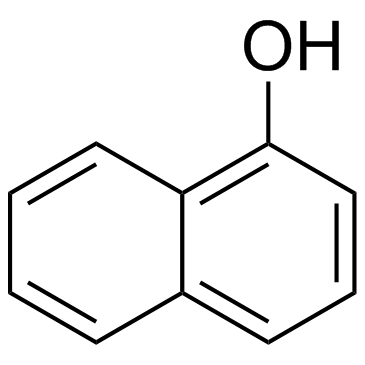 CAS#:90-15-3
CAS#:90-15-3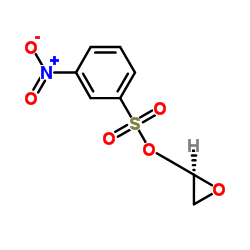 CAS#:115314-14-2
CAS#:115314-14-2 CAS#:75-31-0
CAS#:75-31-0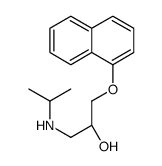 CAS#:4199-09-1
CAS#:4199-09-1 CAS#:108508-19-6
CAS#:108508-19-6 CAS#:119870-21-2
CAS#:119870-21-2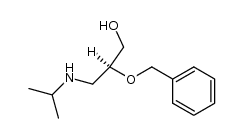 CAS#:119870-22-3
CAS#:119870-22-3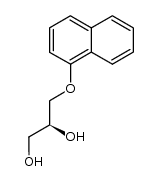 CAS#:56715-19-6
CAS#:56715-19-6